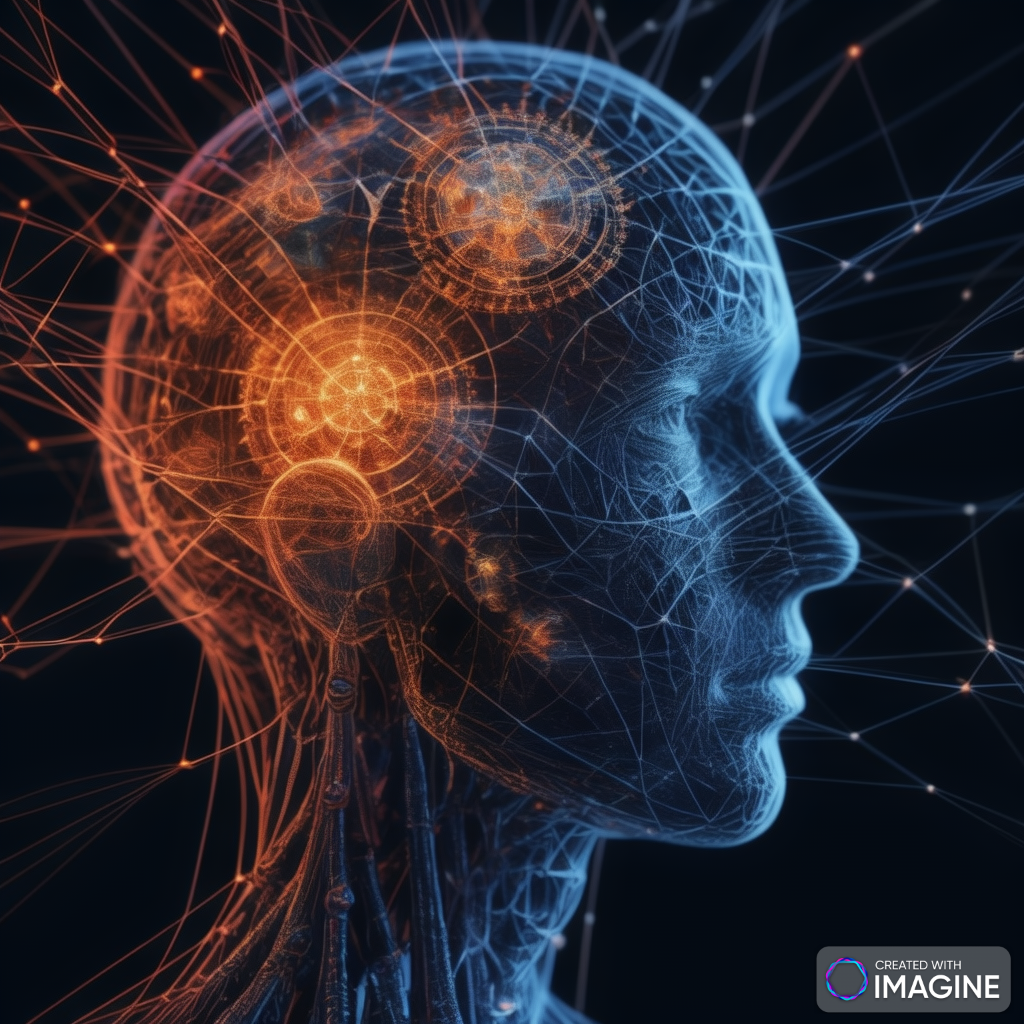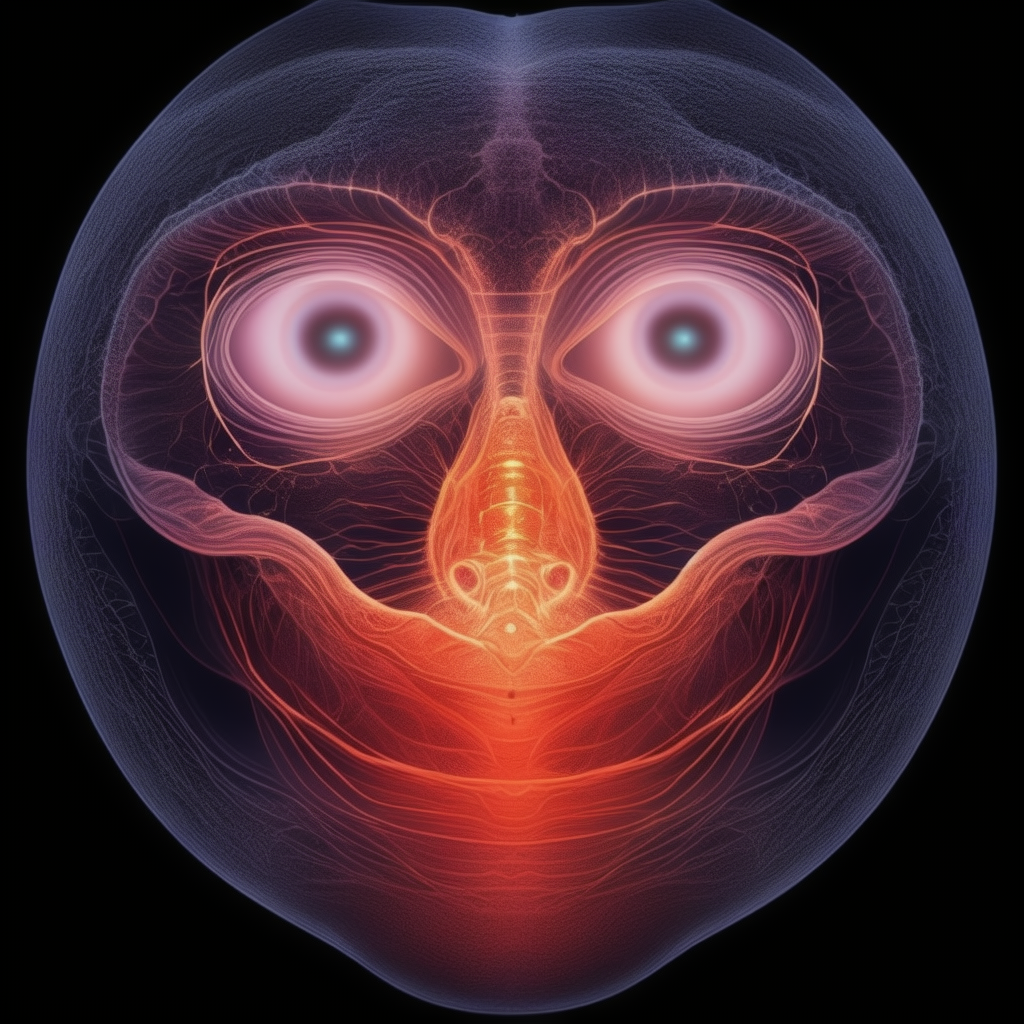The intricacies of how electrochemical and biochemical reactions in the body and brain give rise to thoughts, emotions, feelings, and imaginations are truly fascinating and complex. Let’s delve deeper into this phenomenon and explore the role of sensory perception, stimuli, genetics, and the molecular level processes that underlie our cognitive and emotional experiences.
The idea that thoughts, emotions, feelings, and imaginations are the result of electrochemical or biochemical reactions in the body and brain is a perspective rooted in neurobiology and neuroscience. According to this viewpoint, complex processes involving neurons, neurotransmitters, and other biochemical components play a fundamental role in shaping our cognitive and emotional experiences.
Neurons, the basic building blocks of the nervous system, communicate with each other through electrical impulses and chemical signals called neurotransmitters. When neurons fire, they release neurotransmitters into the synaptic gap, where they bind to receptor sites on neighboring neurons, thus transmitting signals. This intricate network of neural activity forms the basis of various cognitive functions, including perception, memory, decision-making, and emotional regulation.
For example, emotions such as happiness, sadness, fear, and anger are believed to arise from the activation of specific brain regions and the release of neurotransmitters associated with those emotions. Similarly, thoughts and imaginations are thought to involve the activation of neural circuits responsible for cognition and mental imagery.
While the electrochemical and biochemical processes in the brain provide a physiological basis for understanding thoughts and emotions, it’s essential to recognize that human experiences are multifaceted and influenced by various factors, including genetics, environment, culture, and individual differences. Additionally, philosophical and psychological perspectives offer alternative frameworks for understanding the nature of consciousness, subjective experiences, and the mind-body relationship.
In summary, while electrochemical and biochemical reactions in the body and brain contribute to the generation of thoughts, emotions, feelings, and imaginations, the full richness and complexity of human experience extend beyond purely physiological explanations. Integrating insights from neuroscience, psychology, philosophy, and other disciplines can lead to a more comprehensive understanding of the human mind and its intricacies.
- Sensory Perception and Stimuli:
- Sensory perception involves the reception and processing of stimuli from the external environment through our senses, including sight, hearing, touch, taste, and smell.
- Stimuli such as light, sound waves, pressure, chemicals, and flavors are detected by specialized sensory receptors in our sensory organs and converted into electrical signals.
- These electrical signals are then transmitted via neural pathways to specific regions of the brain responsible for processing sensory information.
- Visual Perception:
- In the case of visual perception, photons, which are particles of light, are detected by photoreceptor cells in the retina of the eye.
- These photons trigger a cascade of electrochemical reactions in the photoreceptor cells, leading to the generation of nerve impulses.
- The nerve impulses travel along the optic nerve to the visual cortex in the brain, where they are interpreted and processed to form images, objects, and visual scenes.
- The brain integrates visual information with past experiences and context to perceive the world around us accurately.
- Auditory Perception:
- Auditory perception involves the detection and processing of sound waves by the ear.
- Sound waves cause vibrations in the eardrum, which are transmitted to the cochlea in the inner ear.
- Hair cells in the cochlea convert these mechanical vibrations into electrical signals, which are then transmitted to the auditory cortex in the brain via the auditory nerve.
- The brain analyzes these signals to perceive and interpret sounds, speech, and other auditory stimuli.
- Speed of Signal Processing:
- The human brain processes visual and auditory information incredibly quickly, with some studies suggesting processing speeds of milliseconds or even microseconds.
- This rapid processing allows us to perceive and respond to stimuli in real-time, enabling swift reactions to our environment.
- Role of Genetics and DNA/RNA:
- Genetics plays a significant role in shaping our cognitive and emotional responses to stimuli.
- Our genetic makeup, encoded in DNA and RNA, influences the structure and function of neurons, neurotransmitters, and other components of the nervous system.
- Genetic variations can predispose individuals to certain cognitive traits, personality traits, and susceptibility to mental health conditions.
- ADHD and Electrochemical Reactions:
- Attention deficit hyperactivity disorder (ADHD) is characterized by difficulties in sustaining attention, impulsivity, and hyperactivity.
- While the exact causes of ADHD are not fully understood, research suggests that disruptions in neurotransmitter signaling and neural circuitry contribute to the condition.
- Individuals with ADHD may exhibit differences in the regulation of dopamine, norepinephrine, and other neurotransmitters involved in attention and impulse control.
- Molecular Level Processes:
- At the molecular level, electrochemical reactions in the brain involve the exchange of ions and neurotransmitters across neuronal synapses.
- Neurons communicate with each other through neurotransmitters such as dopamine, serotonin, and gamma-aminobutyric acid (GABA), which bind to receptor sites on neighboring neurons.
- These neurotransmitter interactions modulate the excitability of neurons and regulate various cognitive and emotional functions.
- Differentiating Genuine Responses from Our Own Thoughts and Emotions:
- Distinguishing between genuine responses to external stimuli and our own thoughts and emotions can be challenging.
- Our perception of events is influenced by our past experiences, beliefs, biases, and expectations, which shape how we interpret and respond to stimuli.
- Mindfulness practices and self-awareness techniques can help individuals become more attuned to their genuine responses and discern them from internal narratives and interpretations.
- Role of Sensory Perception and Stimuli:
- Sensory perception involves the reception and interpretation of external stimuli through our senses, including sight, hearing, touch, taste, and smell.
- These stimuli trigger electrochemical reactions in sensory receptors, such as photoreceptor cells in the retina for vision or hair cells in the cochlea for hearing.
- Perception of the World:
- Our perception of the world is constructed from the integration of sensory inputs with past experiences, memories, and cognitive processes.
- The brain processes and interprets sensory information to create a coherent representation of the external environment, including forms, objects, people, words, and images.
- Visual Perception and Photons:
- Photons are fundamental particles of light that carry electromagnetic energy.
- In visual perception, photons are detected by specialized photoreceptor cells in the retina, which convert light signals into neural impulses that are transmitted to the brain for processing.
- Differences Between Blind and Sighted Individuals:
- Blind individuals lack or have impaired vision due to abnormalities in the eye or visual pathways.
- Sighted individuals process visual stimuli to create mental imagery and representations of the world around them, while blind individuals rely on other senses, such as touch and hearing, to perceive their environment.
- Processing Speed of Visual and Auditory Signals:
- The brain processes visual and auditory signals rapidly, with visual information often processed faster than auditory information.
- Studies have shown that visual signals can be processed within milliseconds, allowing for quick recognition of objects, shapes, and patterns.
- Electrochemical Reactions and Cellular Processes:
- At the cellular level, electrochemical reactions involve the exchange of ions across neuronal membranes and the release of neurotransmitters at synaptic junctions.
- Neurons communicate with each other through complex networks of synaptic connections, forming the basis of information processing and transmission in the brain.
- Role of Genetics and DNA/RNA:
- Genetics plays a significant role in shaping our neural architecture, neurotransmitter systems, and susceptibility to certain mental health conditions.
- DNA and RNA encode the genetic instructions for building and regulating the structure and function of neurons, neurotransmitters, and synaptic connections.
- Differentiating Genuine Responses from Internal Narratives:
- Distinguishing between genuine responses to external stimuli and our own thoughts and emotions can be challenging.
- Mindfulness practices, introspection, and cognitive-behavioral techniques can help individuals become more aware of their internal narratives and discern genuine responses from subjective interpretations.
- In conclusion, the complex interplay of electrochemical and biochemical processes in the brain underlies our cognitive and emotional experiences. From sensory perception and neural processing to genetic influences and internal narratives, understanding these mechanisms can provide insights into human behavior, cognition, and mental health.
- Neural Plasticity and Adaptation:
- Neural plasticity refers to the brain’s ability to reorganize its structure and function in response to learning, experience, and environmental changes.
- Through synaptic plasticity, neural circuits can strengthen or weaken connections based on activity patterns, contributing to the formation of memories and the adaptation of behavior.
- Neurotransmitter Systems and Mood Regulation:
- Neurotransmitters such as serotonin, dopamine, and norepinephrine play key roles in regulating mood, motivation, and emotional states.
- Imbalances in neurotransmitter levels have been implicated in mood disorders such as depression and anxiety, highlighting the importance of neurotransmitter systems in emotional well-being.
- Hormonal Influences on Emotions:
- Hormones such as cortisol, adrenaline, and oxytocin influence emotional responses and stress regulation.
- Cortisol, known as the stress hormone, is released in response to perceived threats, while oxytocin, often called the “love hormone,” is associated with social bonding and attachment.
- Gut-Brain Axis and Emotional Health:
- The gut-brain axis refers to the bidirectional communication between the gastrointestinal system and the central nervous system.
- Emerging research suggests that gut microbiota can influence mood, behavior, and emotional regulation through the production of neurotransmitters and inflammatory signaling.
- Psychological Defense Mechanisms:
- Defense mechanisms are unconscious psychological strategies that individuals use to cope with anxiety, stress, and internal conflicts.
- Common defense mechanisms include denial, repression, projection, and rationalization, which help individuals manage threatening or uncomfortable emotions.
- Cultural and Societal Influences on Emotional Expression:
- Cultural norms, values, and socialization practices shape the way
 are expressed, regulated, and perceived within a society.
are expressed, regulated, and perceived within a society. - Cultural differences in emotional expression and communication can influence interpersonal relationships, social dynamics, and mental health outcomes.
- Cultural norms, values, and socialization practices shape the way
- Environmental Stimuli and Emotional Triggers:
- Environmental factors such as social interactions, life events, and sensory experiences can serve as emotional triggers, eliciting specific emotional responses.
- Contextual cues and situational factors contribute to the interpretation and expression of emotions, shaping individuals’ emotional experiences and behaviors.
- Trauma and Emotional Memory:
- Traumatic experiences can have long-lasting effects on emotional processing and memory formation.
- Post-traumatic stress disorder (PTSD) is characterized by intrusive memories, emotional reactivity, and avoidance behaviors, highlighting the profound impact of trauma on the brain and emotional health.
- Evolutionary Perspectives on Emotions:
- Evolutionary theories propose that emotions have adaptive functions that promote survival and reproductive success.
- Emotions such as fear, anger, and love have evolved to help individuals respond to threats, navigate social relationships, and ensure the continuation of the species.
- Understanding the intricate interplay of these factors provides insights into the complex nature of human emotions and the mechanisms underlying our thoughts, feelings, and behaviors.
In conclusion, the intricate interplay of electrochemical and biochemical processes in the body and brain gives rise to our thoughts, emotions, feelings, and perceptions of the world. From the molecular level interactions within neurons to the rapid processing of sensory information, our cognitive and emotional experiences are shaped by a complex network of biological and environmental factors. Understanding these mechanisms can provide valuable insights into human behavior, cognition, and mental health.







